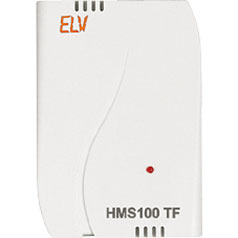
This is a typical case where the temperature on the inner surface of the window is equal to or lower than the dew point temperature.
As I have an education as a physicist, I was not satisfied with the apparently easy solution suggested by the owner to regularly alternate between heating up the rooms and opening windows. I had to understand the abnormal phenomenon which led to the happy proliferation of the disturbing vegetables on my walls. I first began to monitor temperature and moisture and storing it on the computer. At that time, an inovative German company had started producing sensors which could be connected wirelessly to the computer using a lightweight USB interface. These devices are using the FS20 protocol and operate on the 868 MHz frequency. The software they provided with it quickly revealed itself as deeply insufficient for the programming freak and I found a great alternative with IP-Symcon, providing all the necessary configuration and programming freedom I needed.
I equipped the bathroom with a series of wireless Moisture and Temperature sensors to monitor mould proliferation conditions. Simply measuring the Moisture to predict mould evolution is not sufficient. What matters is the dew point.

HMS100TF Sensor (source: ELV.de).
A mould monitoring system should therefore include at least one Moisture/Temperature sensor (e.g. HMS 100 TF) situated near the middle of the room and one temperature sensor fixed at the point where the mould is expected to form (e.g. HMS 100 T). The dew point is calculated from the Temperature and Moisture values in the center of the room. If the temperature measured on a part of the wall reaches the dew point, then condensation will form on this wall and mould is likely to expand. The temperature of the walls or floor in a room should therefore always be higher than the dew point. This is equivalent to saying that the dew point should always be situated inside the wall and not on its surface.
All the measured (Temperature, Moisture) and calculated (Absolute Moisture, Dew Point) parameters are displayed in the variables list and this simple mould monitoring system can warn when the risk of mould formation is high. The solution is then simply to open the window to reduce the moisture. Before opening the window, the temperature should be preferably high in order to let the air escape with more water.
×
![]()
Comment Box is loading comments...